The wait is over, IP Fabric v3.0 is HERE! 🎉🙌
Quite often, when a company pushes out an update, it’s more about their developers squishing a few bugs than actually giving you shiny new toys - I mean, features.
This is not one of those updates.
In our quest to help you empower your network engineers, we’re rolling out an update that expands our platform’s capabilities in unprecedented ways.
In this update, we’re adding Network History functionalities that allow you to display the network state from any point in the past and compare it to the current state. This will enable you to do things like work on the platform while the discovery process is running, export any snapshot you’d like, and more!
Let’s go over the shiny new toys you’re getting in a little more detail so you can take full advantage of our platform.
Of all of our platform’s new features, this is the one we’re most excited about.
Unlike in previous versions where you could only see the latest network snapshot, our v3.0 update allows you to pull up any previous snapshots so that you can see how the network performed before. This new capability extends to all aspects of the platform, including technology verification tables and diagrams.
Thanks to IP Fabric’s newest update, you can now pre-load and instantly switch between up to five snapshots.
Now, instead of going through a lot of effort trying to figure out what changed in your network over the weekend, you can have an answer instantly.
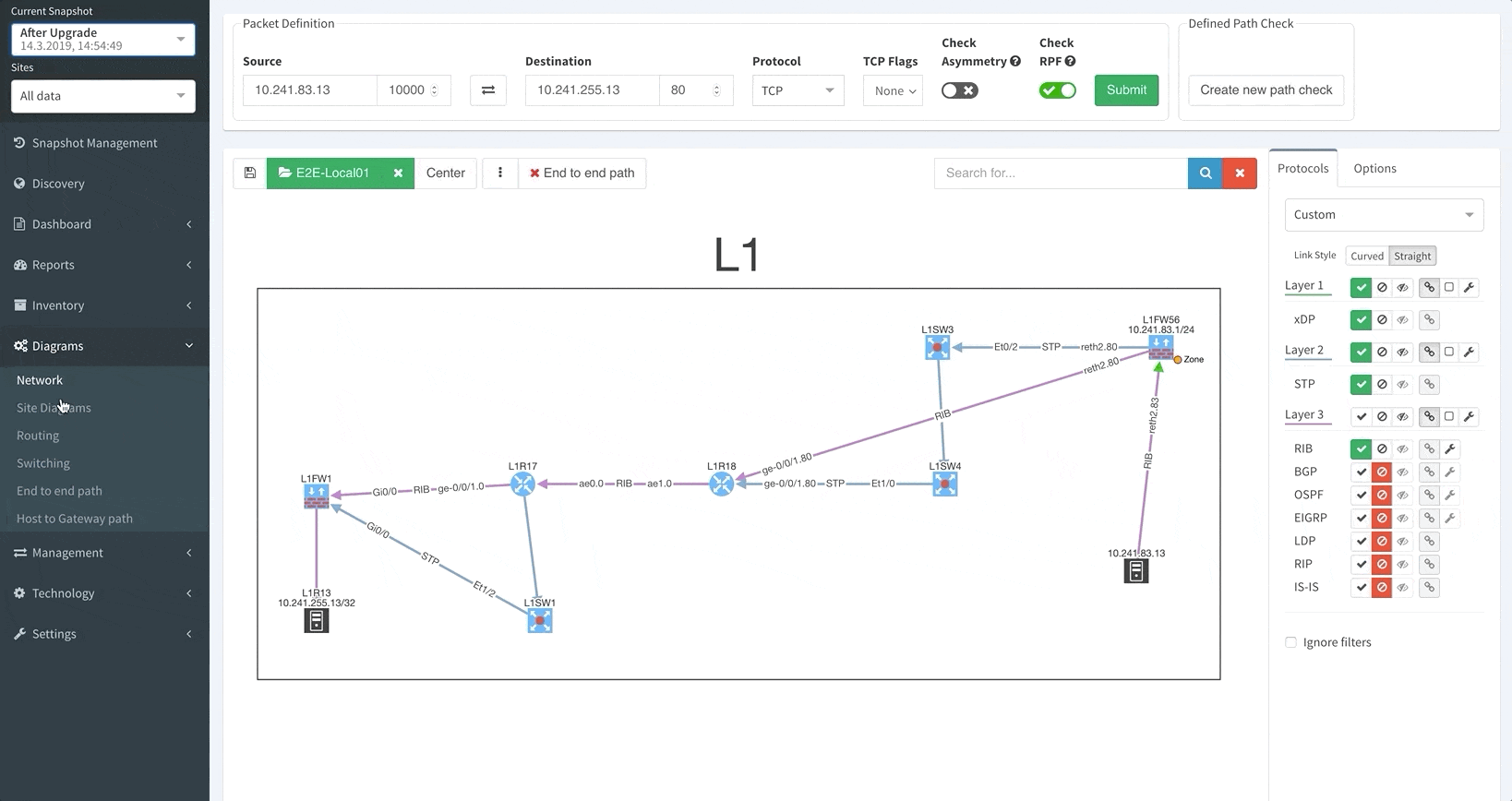
Your days of waiting for IP Fabric’s platform to finish an operation before allowing you to use its other features are over.
The system now allows you to use all of IP Fabric’s features while simultaneously running other processes (like a network discovery), saving you even more time.
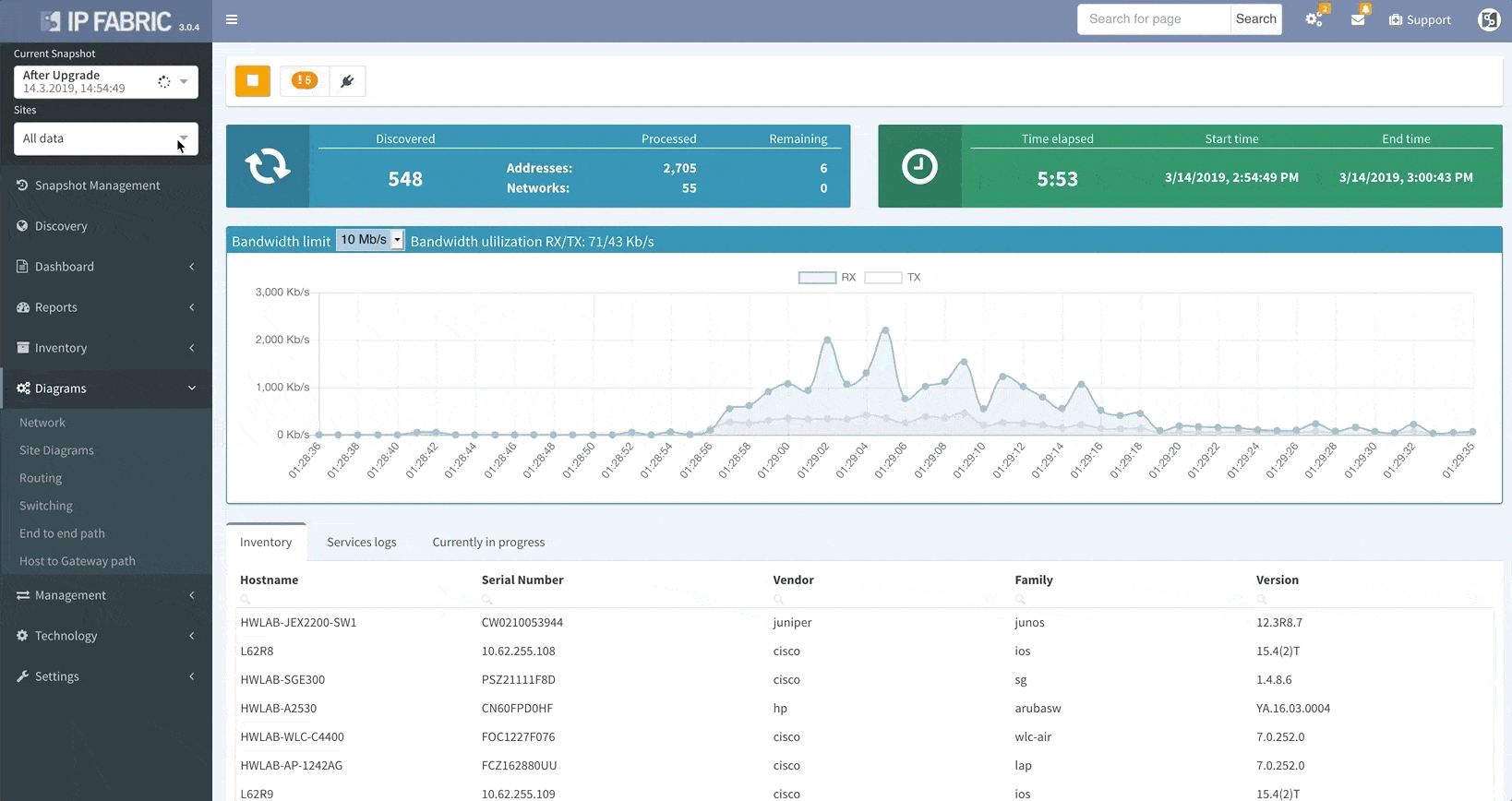
When the platform encounters a device that it isn’t able to log into, whether it’s due to misconfigured passwords, missing access control lists (ACL), or any other reasons that may arise, it no longer needs to scrap the current discovery process and start over again from scratch.
This update allows you to “discover” the missing devices manually by adding details like the username, password, IP address, or other pieces of information into the platform, saving you loads of time previously spent restarting discovery processes.
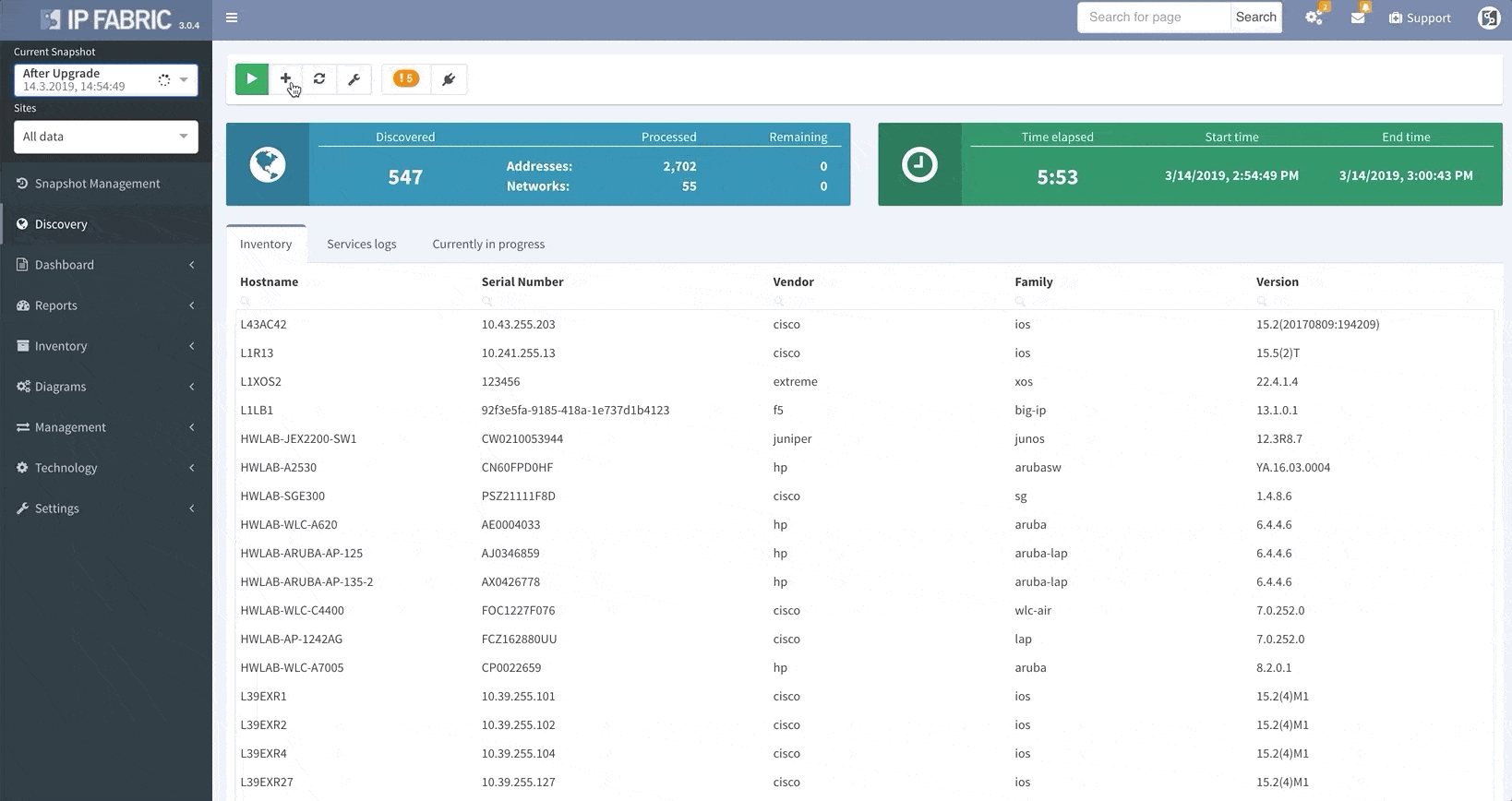
Thanks to the update, IP Fabric now allows you to run targeted partial discoveries on select devices. This can be useful in all sorts of scenarios. For example, if you’re using IP Fabric as part of the change management process.
In this scenario, to run a targeted discovery, select the devices affected by the network change. The process will automatically update their state data, saving you time and effort.
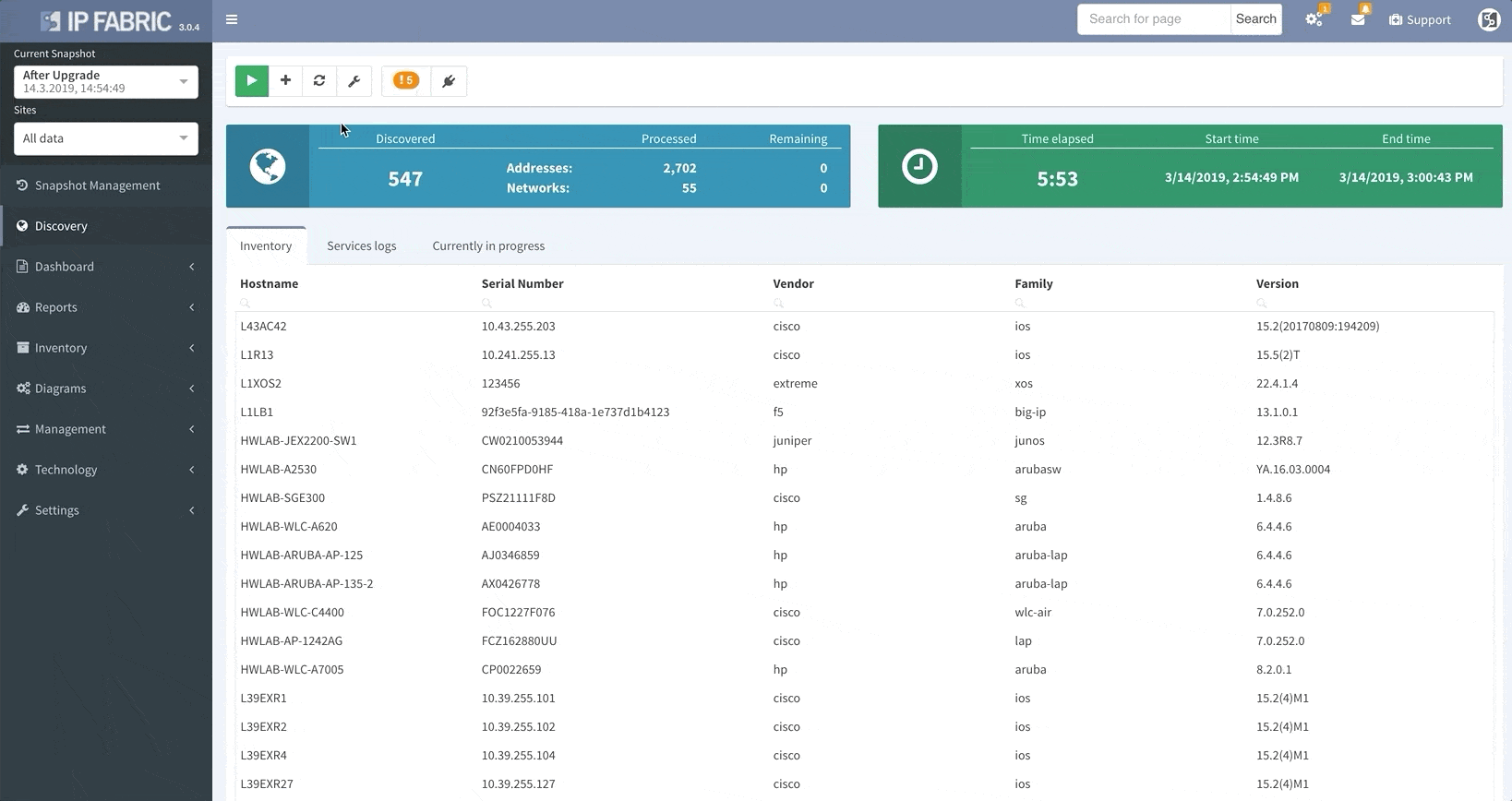
IP Fabric v3.0 comes with a snapshot management tool. That allows users to do all sorts of things with their network snapshots, including:
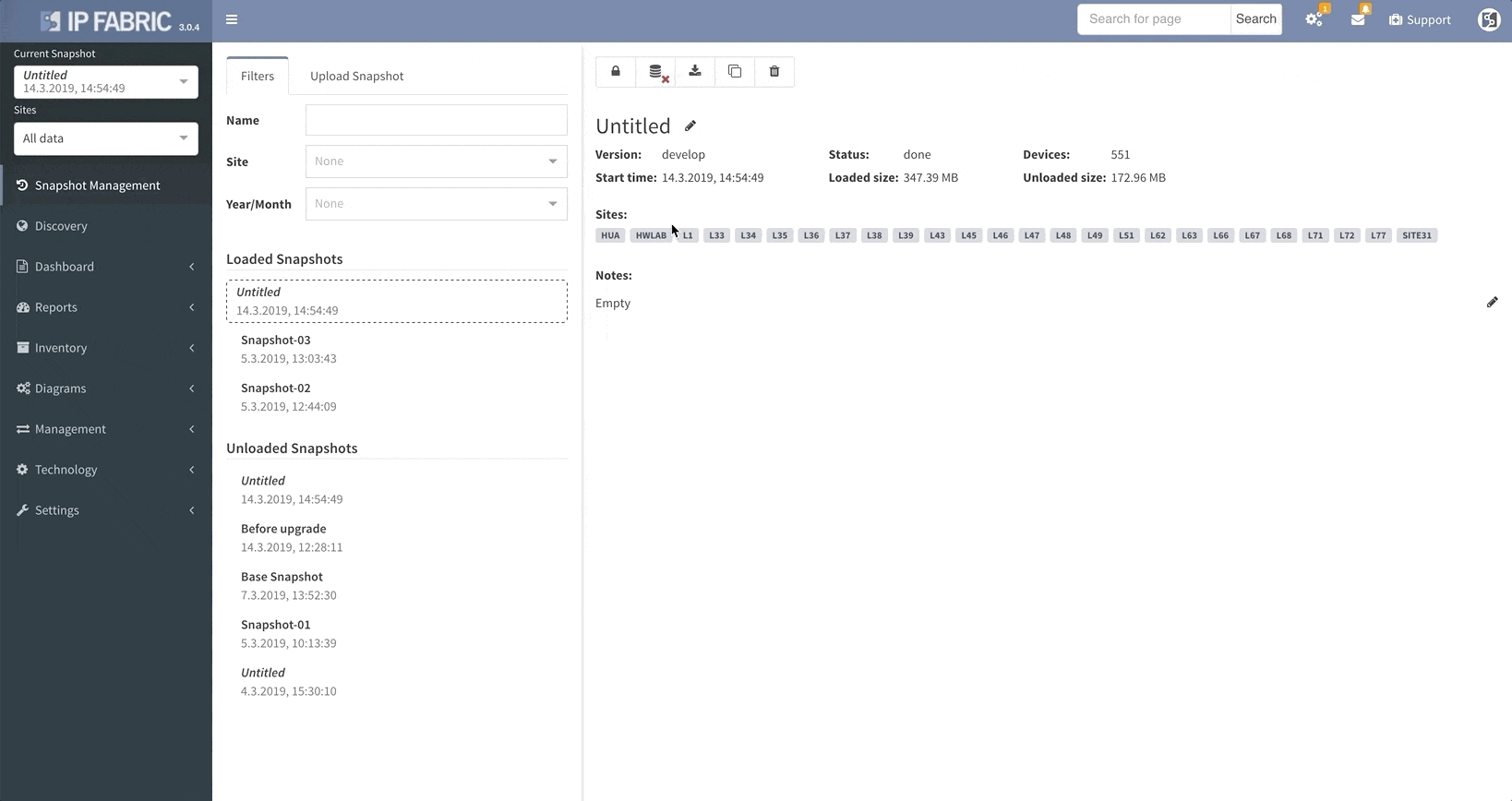
We’ve continued to improve our platform’s network discovery process, including improved platform detection.
Diagrams load even more quickly than before, especially in large network environments.
For those who want to take our platform’s automation to the next level, we’ve published our platform’s API documentation here.
Other various improvements and fixes that we haven’t outlined here can be found in the release notes here.
Interested in learning more about how IP Fabric’s platform can help you with analytics or intended network behavior reporting? Contact us through our website, request a demo, or follow this blog.
Documentation is a critical part of any project or technical environment. If we don’t jot down some important information along the way, we end up repeatedly asking the same basic questions over and over again, completely draining our team members. We’ve heard from many team members that have admitted that the most annoying part of their day is answering those same repetitive questions day after day.
To begin with, when it comes to documenting computer networks (or other similar systems) we tend to use programs like draw.io or Visio. These programs are fantastic for outline ideas during the creative process of designing a new network. Furthermore, tools like these help us visualize our concepts, present them to others, then easily update those ideas as they evolve into a more cohesive plan.
For these tasks, these tools are great, but when the environment goes live… we quickly discover that we need something more.
Content updates to documentation can be a pain to maintain, especially for some of the more extensive networks — and the larger the network, the more changes an organization seems to want to make per day.
One solution to this issue is to appoint a dedicated team member (or, depending on the size of the network, an entire team) with the task of maintaining documentation. Whether they’re frequently updating the documentation themselves, or pushing the engineers to update the documentation after each update, this becomes quite the labor-intensive task.
Before we built the IP Fabric platform, we knew that there had to be some way to save time during time-consuming network operations processes. After simplifying that process through automation, we then took that same logic and turned our sights on the documentation process. Hence, we added a feature to the platform that gathers more than 1000 parameters from a single network device.
Now, on top of generating breathtaking interactive network diagrams, the platform can generate low level design documents. After every discovery snapshot, the platform creates a report that includes all the information needed for an audit, including device inventory details, physical layer, data-link layer details, routing and switching details.
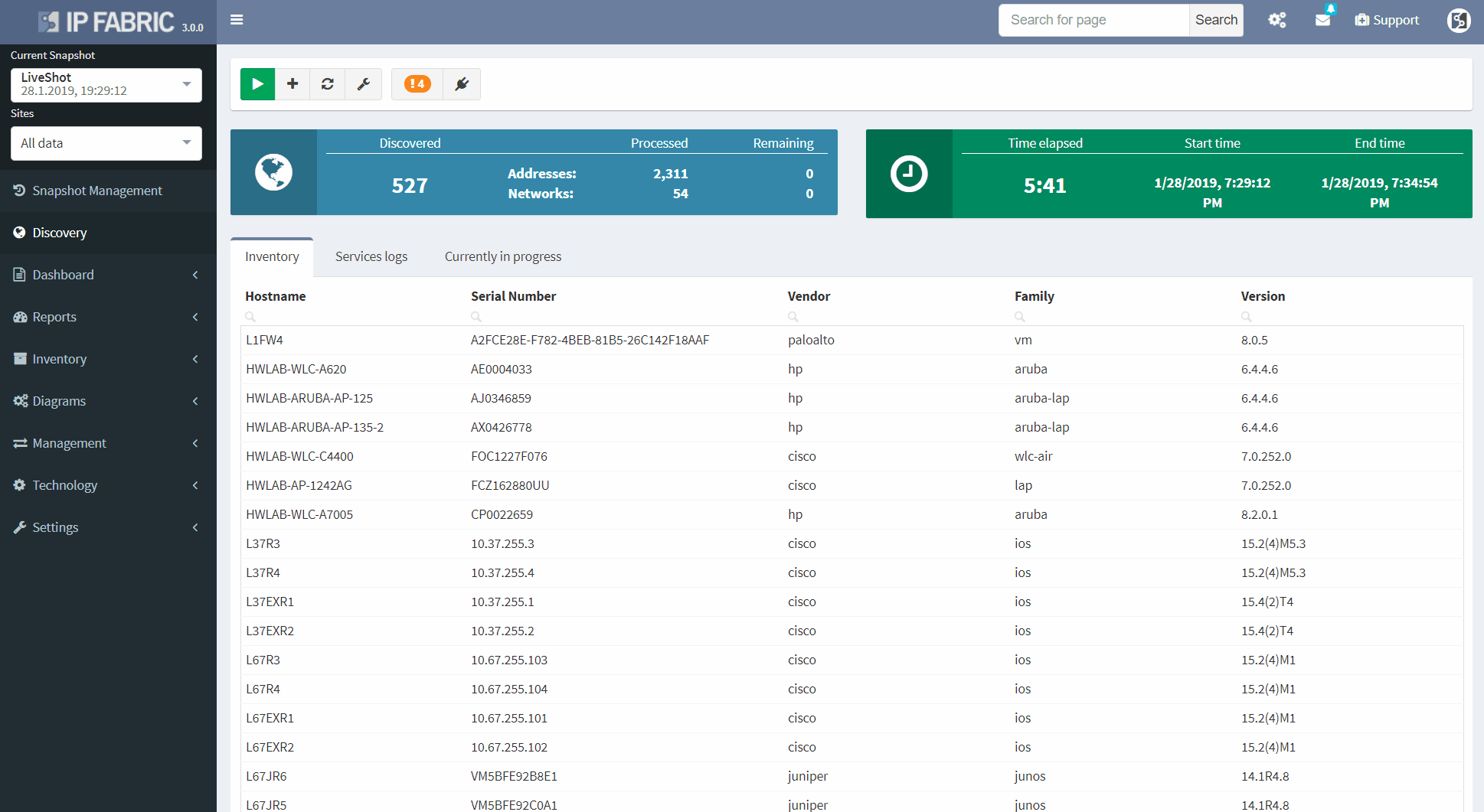
These documents full of fancy diagrams can be generated whenever needed, and can easily be modified or compared to previous versions. This feature is an excellent timesaver for any Network Engineer or Network Engineering Manager, which helps them become a much more productive team member. Instead of wasting time working on mundane tasks, they can focus on tasks that create value. For example, examining overall network architecture, increasing stability, or having some spare time to enjoy their cup of coffee.
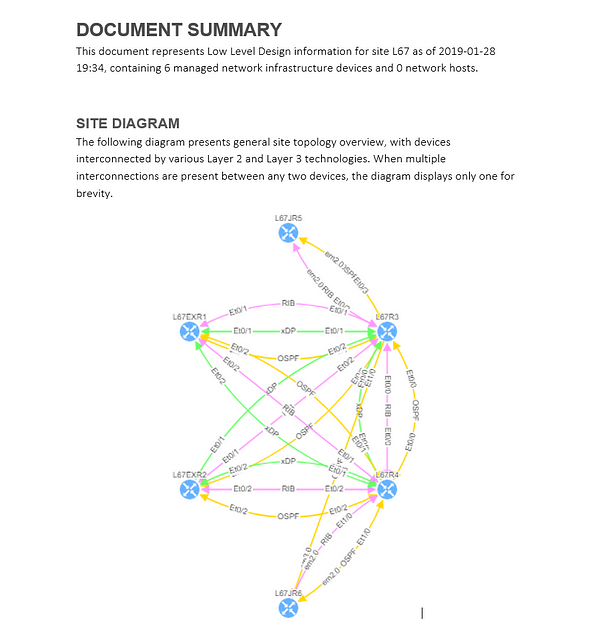
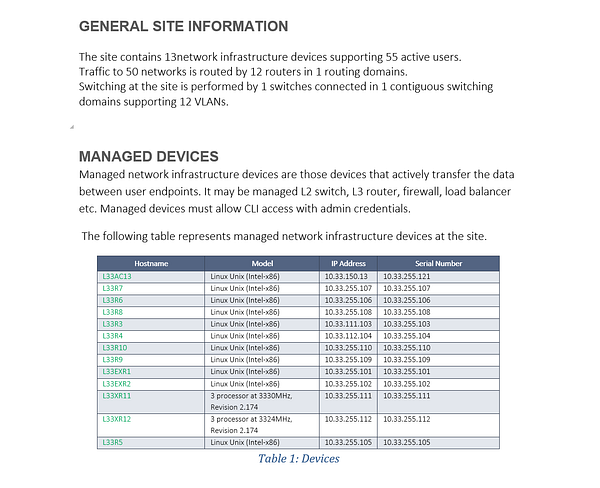
If you’re interested in learning more about how IP Fabric’s platform can help you with analytics or intended network behavior reporting, contact us through our website, request a demo, follow this blog or sign up for our webinars.


